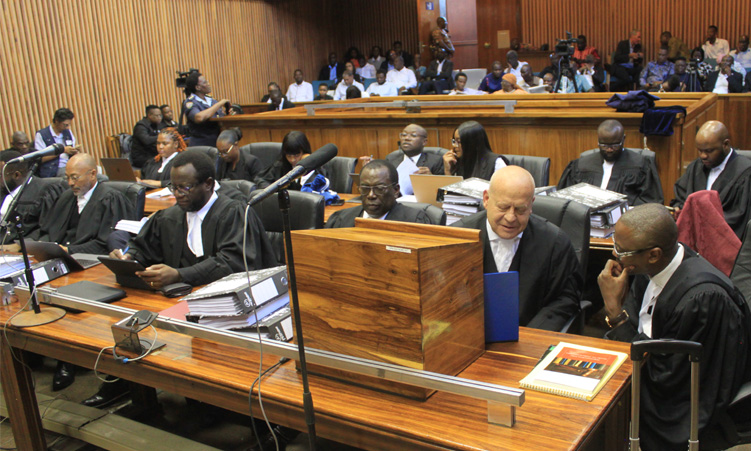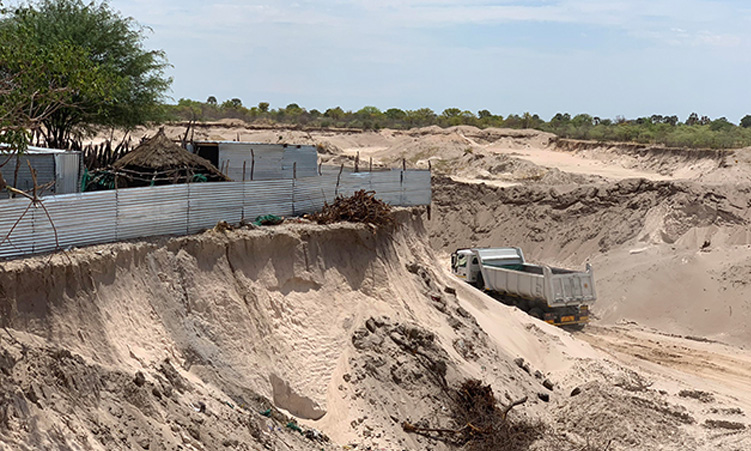UNITED NATIONS – US aid should focus more on reducing poverty in the poorest countries instead of being driven primarily by security concerns, a coalition of US-based charities said on Thursday.
InterAction, an alliance of 165 non-governmental organisations that operate internationally, said that while the United States was the biggest overseas donor, its state aid was handled inefficiently and not directed at the most needy. A list of the top 20 recipients of US aid includes only four of the world’s 20 poorest countries – Ethiopia, Liberia, Uganda and Tanzania.The biggest recipient was Israel, with US$2,5 billion in 2006, followed by Egypt, Iraq and Afghanistan.InterAction president Sam Worthington said that while there was an argument for focusing some foreign assistance on security issues, a broader approach to poverty was needed.Washington joined the rest of the world in committing to a set of UN Millennium Development Goals in 2000 aimed at halving world poverty by 2015, but Worthington said Washington had not done enough to translate that into policy.A report published by InterAction on Thursday, the first of an annual series tracking US progress toward achieving the Millennium Development Goals, said US official development assistance rose from US$13,1 billion in 2001 to US$27,7 billion in 2005.It said the United States was “without a doubt, the world leader in the fight against HIV-AIDS,” and was also a leader in world efforts to promote debt relief for the poorest nations.”It has offered constructive solutions and worked to build consensus (on debt relief),” it said.But the United States lags behind most of Europe in foreign aid both as a proportion of national income and on a per capita basis.And the aid is increasingly driven by geopolitical concerns rather than by the pledge to end extreme poverty.”In the post-9/11 era, US foreign aid has been recast,” it said.GEOPOLITICAL CONCERNS Foreign aid has become more “militarised,” it said, with the proportion of overseas development aid managed by the Department of Defence rising from 3,5 per cent in 1998 to 5,6 per cent in 2002 and 21,7 per cent in 2005.Worthington said addressing security needs in just a few countries was not in America’s long-term interest.”You need to relate to a much broader swathe of countries across the world,” he said.The report said US non-official flows to developing countries in 2006 were US$136,7 billion, including US$69 billion of private investment and US$41 billion in remittances from migrants.The organisations in InterAction raise some US$7 billion a year.However, the report said, foreign direct investment was also not targeting the poorest countries.Upper and lower-middle income countries received 94 per cent of the US$69 billion in 2006.Only two per cent went to the poorest countries.The report said addressing the causes and consequences of poverty should be the primary objective of US official development assistance and it recommended consolidating management of all aid under a new cabinet-level department.”There are over 20 different ways that foreign assistance is being managed and distributed through the US government, which creates a cacophony of voices with not much effectiveness,” Worthington said.Nampa-ReutersA list of the top 20 recipients of US aid includes only four of the world’s 20 poorest countries – Ethiopia, Liberia, Uganda and Tanzania.The biggest recipient was Israel, with US$2,5 billion in 2006, followed by Egypt, Iraq and Afghanistan.InterAction president Sam Worthington said that while there was an argument for focusing some foreign assistance on security issues, a broader approach to poverty was needed.Washington joined the rest of the world in committing to a set of UN Millennium Development Goals in 2000 aimed at halving world poverty by 2015, but Worthington said Washington had not done enough to translate that into policy.A report published by InterAction on Thursday, the first of an annual series tracking US progress toward achieving the Millennium Development Goals, said US official development assistance rose from US$13,1 billion in 2001 to US$27,7 billion in 2005.It said the United States was “without a doubt, the world leader in the fight against HIV-AIDS,” and was also a leader in world efforts to promote debt relief for the poorest nations.”It has offered constructive solutions and worked to build consensus (on debt relief),” it said.But the United States lags behind most of Europe in foreign aid both as a proportion of national income and on a per capita basis.And the aid is increasingly driven by geopolitical concerns rather than by the pledge to end extreme poverty.”In the post-9/11 era, US foreign aid has been recast,” it said.GEOPOLITICAL CONCERNS Foreign aid has become more “militarised,” it said, with the proportion of overseas development aid managed by the Department of Defence rising from 3,5 per cent in 1998 to 5,6 per cent in 2002 and 21,7 per cent in 2005.Worthington said addressing security needs in just a few countries was not in America’s long-term interest.”You need to relate to a much broader swathe of countries across the world,” he said.The report said US non-official flows to developing countries in 2006 were US$136,7 billion, including US$69 billion of private investment and US$41 billion in remittances from migrants.The organisations in InterAction raise some US$7 billion a year.However, the report said, foreign direct investment was also not targeting the poorest countries.Upper and lower-middle income countries received 94 per cent of the US$69 billion in 2006.Only two per cent went to the poorest countries.The report said addressing the causes and consequences of poverty should be the primary objective of US official development assistance and it recommended consolidating management of all aid under a new cabinet-level department.”There are over 20 different ways that foreign assistance is being managed and distributed through the US government, which creates a cacophony of voices with not much effectiveness,” Worthington said.Nampa-Reuters
Stay informed with The Namibian – your source for credible journalism. Get in-depth reporting and opinions for
only N$85 a month. Invest in journalism, invest in democracy –
Subscribe Now!









